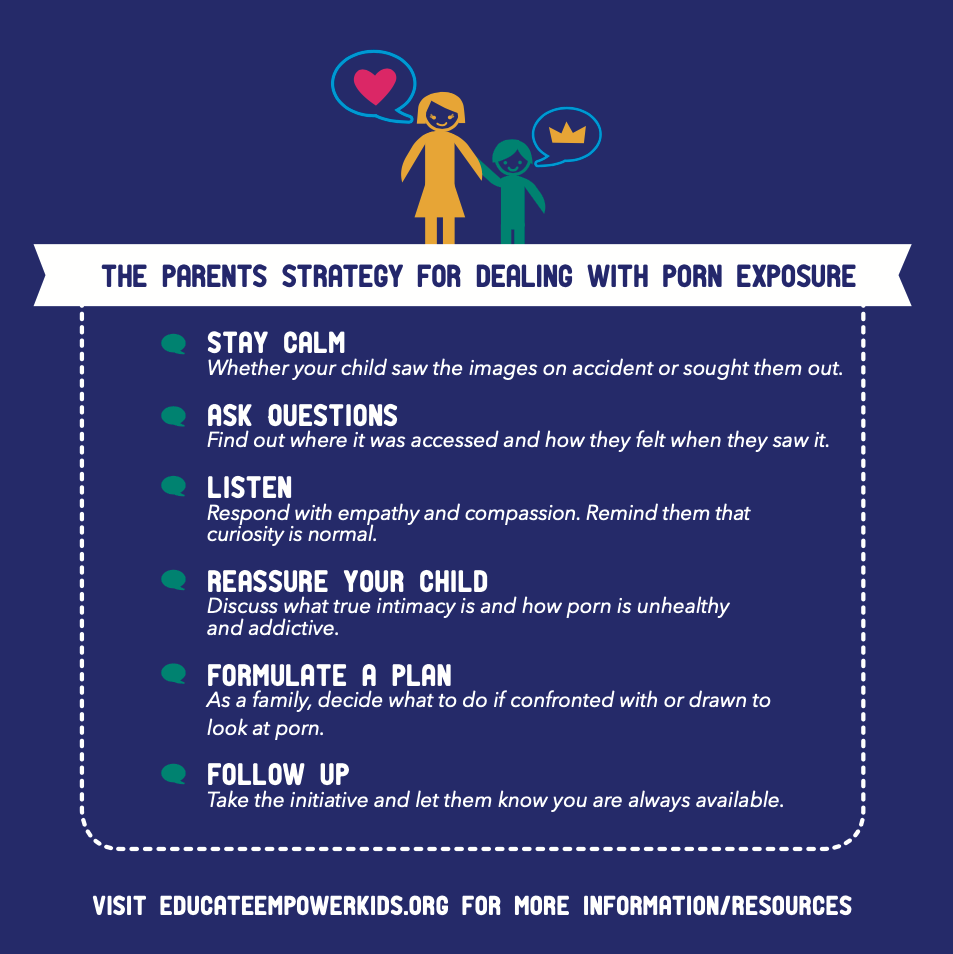Please watch the following New Zealand public health advertising campaign targeting pornography and kids:
Porn ad designed to protect children
Early in my career I did research about sex education. I learned that in the United States we are not doing a good job preparing our young people to make decisions regarding their bodies and their sexuality. In the US, we begin sex education at a much older age than European countries with the end result being US teens are less prepared to make healthy decisions regarding their sexuality. When we teach kids math, we begin at an early age with counting and then proceed to adding, subtracting, multiplying, etc., before we present them with complex mathematical problems. Without a basic understanding of human sexuality, kids lack the ability to talk about their body, their experience of their own body, and how to make healthy decisions around physical intimacy. Because of the availability of information via the internet, it is more important than ever that parents take an active role in educating their children about sex and about sexual intimacy.
Research suggests that the average age children first see pornography is between ten and thirteen years old. Some children actively search for pornography, but often a simple search word will result in sexually explicit language and images. Cell phones enable children who may be simply joking about “bad” words to search for the word and then be exposed to sexual content that they are not mature enough to understand. Children need to be taught that there is misleading information out there—including pornography—and then provided accurate information regarding healthy sexual intimacy.
When receiving information about sexual intimacy through pornography, kids don’t know that what they are watching is not real, but staged. Pornography doesn’t model a real life intimate relationship of which sex is one part. Pornography doesn’t model consent, how the person decided to engage in a particular sexual act, or what the person feels before, during, and after sex. Moreover, pornography can be a dangerous fantasy or preoccupation leading to problems with sexual intimacy including pressure to perform in a certain manner. It can be shocking for parents to learn how much dysfunctional sexual information is taught to teenagers via pornography.
Making decisions regarding sexual intimacy is a complex process. It is important for children to have good information, are comfortable with their body, and are clear about their needs, wants, emotions, and beliefs. The best information your children can receive will come from you. Please take time to educate yourself and find resources to help you talk to your children about healthy intimacy and the risks of pornography on their sexual health and well-being. I also encourage you to talk to other parents to support each other, to share resources, and most importantly so that your children are getting similar messages that they can share with one another.

Subscribe to receive the latest stories, thought leadership, and growth strategies from PCS therapists.